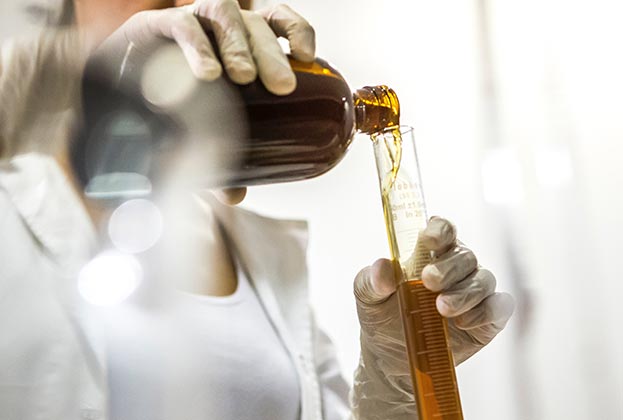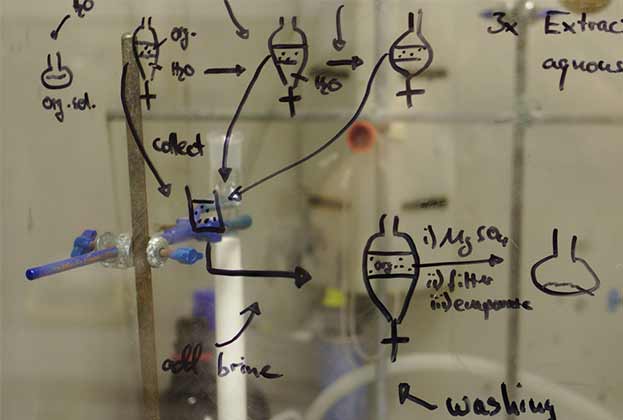Review of the capital raising in London and an assessment of the demands levels, particularly in West London
The drive in demand from life science occupiers to be located in London is being spearheaded by the expansion in specific sectors. For example, a large and growing part of biomedical research is being underpinned by the expansion of cell and gene therapies which are attempting to treat diseases such as cancer, cystic fibrosis, heart disease, diabetes and AIDS. The sector is growing at an exponential rate. In 2012, there were only 500 people employed in the cell and gene therapy industry in the UK. The Cell and Gene Therapy Catapult forecast that employment in the sector to reach over 6,000 jobs by 2024 which is 12x above 2012 employment levels. London is the leading location in the UK for this type of treatment. There are seven Medicines and Healthcare products Regulatory Agency (MHRA) licensed manufacturing facilities in the region, which is the largest cluster in the UK. The attraction of being located near the manufacturing facilities as well as the large graduate talent pool (29,600 life science graduates in London) has culminated in life science occupiers relocating or expanding in London. Furthermore, there is a growing demand from technology occupiers to be located near life science occupiers as technology is being used to establish greater efficiencies in clinical trials.
The expertise of the sector has been internationally recognised which has resulted in venture capitalists actively targeting the UK life science sector. The initial sums of capital invested into these companies is rising. This has been exemplified by Autolus who raised over £170 million in venture capital and subsequently offered an initial public offering (IPO) in 2018 and are now listed on the Nasdaq stock exchange. Furthermore, Achilles Therapeutics and DNA Electronics have raised £117.8 million and £40.8 million, respectively. There have been examples of early-stage life science start-ups being able to expand quickly and commit to large quantities of space. Quell Therapeutics leased 12,000 sq ft at I-HUB in December 2019. The start-up was only founded in March 2019 and raised £35 million of Series A venture capital finance.
The expansion of the industry has resulted in a number of potential life science clusters emerging in London, predominantly close to the city's world-class academic campuses and leading teaching hospitals. West London, in particular, is emerging as a key location in London’s life science landscape. The catalyst for this new cluster developing is Imperial College’s White City Campus. The Translation & Innovation Hub (I-HUB) which comprises 187,000 sq ft was developed by Imperial College London and achieved practical completion in 2016. The scheme incorporates a range of fully serviced laboratory, write-up, incubator and office spaces, providing scalable, high specification accommodation to commercialise research and ideas. Scale Space which is located on Imperial College’s White City Campus South Site comprises 200,000 sq ft of innovation space which is being developed across three phases. The joint venture from Imperial College London and Blenheim Chalcot is over 50% pre-let and the three phases are expected to complete by 2021. Notable life science occupiers who have moved to and expanded in West London include the aforementioned Autolus who leased 33,000 sq ft (14,000 sq ft of this was laboratory space) at Mediaworks, White City Place. The increasing pull of West London to life science occupiers was highlighted by multinational pharmaceutical firm Novartis relocating their UK headquarters from Frimley in Surrey to lease 54,000 sq ft at Westworks, White City Place.
The demand from life science occupiers for purpose-built laboratory space is outpacing supply which has resulted in some pharmaceutical occupiers fitting out their own laboratory space in conventional office buildings. To accommodate this growing trend, landlords may need to incorporate flexible floorplates into their buildings, in the future, which can be easily sub-divided into laboratory space. Autolus and Novartis who both relocated to Stanhope and Mitsui Fudosan’s White City Place development, have fitted out laboratory space; the remainder of the building is multi-let to other tenants who occupy conventional office space. Overall, the flexibility demonstrated by the landlord has resulted in the scheme appealing to a variety of occupiers.
Due to the dearth of laboratory space available in the market, we envisage the trend of life science occupiers retrospectively fitting out laboratory space in conventional offices continuing. The demand for laboratory space from life science occupiers will continue, shown by the fact that 98% of companies surveyed by the Cell and Gene Therapy Catapult indicated that they would increase their headcount in the next five years.
Landlords and funders have the opportunity to capitalise on the expanding life science sector. Start-ups from the life science sector are predominantly well-funded companies who have the resources to expand quickly. The expansion of these start-ups is evidence of acceleration of cell and gene therapies towards commercialisation. Landlords and funders need to be comfortable with engaging with such start-ups in order to capitalise on the opportunities the sector presents. This, however, is a challenge in the context of both London's competitive occupier market and the relatively nascent nature of the commercial life science sector in the capital.
London lagging, for now
There is very little existing or short term pipeline commercial lab space, although more schemes are considering adapting offices as a response to tenant demand. Analysis of planning data shows the dearth of new laboratory space coming through in the next couple of years. For the UK, by value, there are over £2.5bn of lab/R&D projects, at various stages, that could be delivered in the 2020-2022 period. London only accounts for a 5% share of this total. This may change as there is significant interest in delivering more R&D type commercial real estate in the next few years in Central London (including this potential for office-to-lab conversions - see Changing the urban lab-scape).
As shown above, the analysis of capital raising in London, where life science is part of the companies' description, shows a significant variety of associated sub-sectors. The largest proportion (16.3%) are 'pure' life science-related, but other areas it mixes with include software, digital health and wearable technology. Therefore, not all of the companies within the wider sector will have intensive wet lab requirements.
Read the articles within Spotlight: Life Sciences – Trends & Outlook below.
.jpg)




